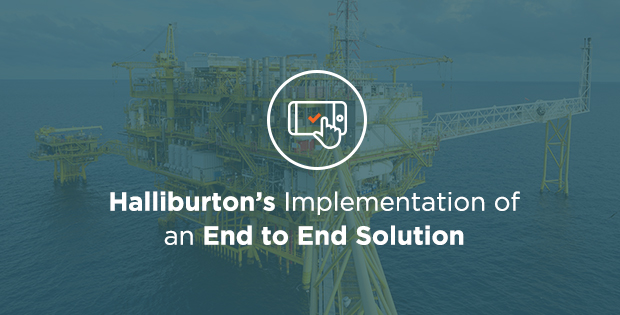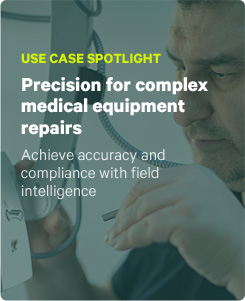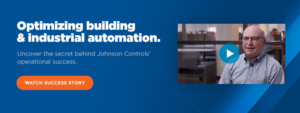
This is a conversation between Mark Scott (VP of Marketing, ProntoForms) and Yamina Hibbard (Global Asset Manager, Halliburton).
Yamina: Hi, everyone. Yamina Hibbard here. I’m the Global Asset Manager for Halliburton. Halliburton is one of the world’s largest providers of products and services to the energy industry. Halliburton serves the upstream oil and gas industry throughout the whole lifecycle of the reservoir. From the 14 divisions within Halliburton, I work for the drill bits division, and we provide lead-in high-efficiency six-cutter and other drill bit solutions to our customers for reliable performance in drilling operations.
Mark: Excellent. Yamina, can you maybe talk a little bit about some of the challenges related to your division that you’re facing, and what that journey looked like in terms of your – you’re probably thinking, “there’s got to be a different way” – but maybe you can describe some of the challenges related to the processes that you’re trying to improve.
Yamina: Sure. So, Halliburton is the leader in technology and the product we deliver to our customers. We’re constantly improving our processes to optimize efficiency and adopt the latest technology. One of the processes that we’ve identified as needing improvement was the way we collect data and tickets from the rig site and the amount of time that it took to get the data from the field site to the office for billing purposes. That’s basically how we started a year ago. We were trying to find a solution, and after researching different options and interviewing different providers, ProntoForms was at the top of the vendors that we had interviewed. And we’re still very impressed with the excellent customer service, the speed of the deliverables, and the reliability of their mobile solution.
Mark: I know there’s two key solutions, so maybe we could talk a little bit about the first one – the old way, so your field tickets out in the field and your carbon copy five level forms, and that experience – for your people out in the field.
Yamina: Yes, so ProntoForms was able to deliver two solutions for our division. The first one was the mobile form ticket and the second one is the mobile inventory app. So, for the first one, in the past, the field users used to use this old carbon paper ticket book. They would carry it with them to the rig site and manually fill them out with all the relevant information every time they delivered a product to a customer or to a rig site. Those hard copies were then scanned and emailed to the office so we could process the billing here at the office. We used to receive the tickets on a weekly basis. And sometimes, it took months for the tickets to get here because those tickets were just simply lost or forgotten in the back of a truck. With the ProntoForms app, the tickets are now generated and submitted in real time. The field rep electronically fills out all the tickets on their mobile application, on their iPhones or iPads. They capture the customer signature. They can even take pictures of the product they’re delivering. And they can also email the ticket itself to the customer, so the customer would receive it electronically in their mailbox instead of keeping track of the hard copies. Those electronic tickets are auto-forwarded to the billing team here and we complete the invoicing in SAP. The second solution that we recently deployed here is the mobilized inventory app. This tool provides visibility to our field rep on all the current assets and drill bits, so they don’t have to call the office anymore asking, “Hey, do we have this product, this specification, with this technical detail?” They can simply log in on their app and search for what they have in inventory, the warehouse, or anywhere else.
Mark: Very good. So, Yamina, in our discussion, one of the things that I thought was very interesting was that the assets you’re managing are essentially on consignment status. You can drop 10, 20, 30 different drill bits at a rig site, but you only get paid when the customer actually uses the assets that you drop on the site. So, maybe you could talk a little bit about that because that ability of being able to track and then improve the speed to invoicing once assets are used, it’s made a pretty significant impact on your business as I understand.
Yamina: Absolutely. One of the major benefits of the ProntoForms mobile app was the real-time data collection. Where we used to receive the data once a week, once a month, whatever, now we have it in real time. The field rep used to manually write and fill out those carbon paper tickets. We used to have a lot of issues trying to under- stand what they were actually trying to say on those tickets. Now, they’re electronically typing the information, so everything is clear on our end, the output is all standard, and on top of it, it’s really real time. We also benefit from some reporting capabilities that we pull directly in a matter of seconds from ProntoForms’ portal, and it helps a lot with the reconciliation and the audit activities that we do here at the office. So, by having that report every day, we are able to see what’s going on in the field, what was dropped, what was delivered, what was picked up, and what was billed.
Mark: That’s pretty intense. There’s lots of stakeholders there. What’s some of the feedback that you received now that so many different players are involved in the solution? You talked about your field technicians dropping the assets in the field. You talked about your sales people. You talked about tracking inventory. You talked about the accounting department. And then I’m sure the reports obviously are valuable to your sales team internally as well as your asset management operations people as well. What kind of feedback have you been getting from all of these different stakeholders?
Yamina: Mark, I could say that there was a mixed feeling. I can definitely say there was a lot of resistance from the field. When you talk about the field, they’re not your typical technology, sit-in-an-office people. These are people who are great at what they do in the field. So don’t ask them about the latest technologies or using a mobile application. I mean, I had to deal with some field guys who were still using flip phones at the time we deployed the mobile app. So, not only do they have to switch to an iPhone; they also have to start learning how to do business on a mobile application. There was definitely a lot of resistance there. Some of them have kind of complained, “Hey, I can’t use an iPhone. I need an iPad because my fingers are too fat for an iPhone. I can’t see it.” “So, hey, let’s switch to iPad. Let’s make it better for you.” I think definitely a lot of resistance in the beginning, that’s for sure. But I think they got used to it. Sometimes, you could show them the benefits and what it’s doing for them and for us as a company. I think you could get their buy-in.
Mark: Excellent. And what about the people in the office in terms of these new improvements to the business processes? What was some of the feedback you got from your office people?
Yamina: The office people were just thrilled. I mean, it saved us a lot of time, a lot of money, because our billing team didn’t have to work overtime anymore to catch up on all the missed tickets. It definitely helped a lot for the people sitting in the office because it eliminated the time that they spent on reporting. Now they could just log onto ProntoForms and get the report in two seconds, literally, instead of spending all day updating their tracker on what has been received, and what has been picked up, and what has been billed. So, definitely the office people were more positive and more, I guess accepting, of this new technology.
Mark: Cool. The other thing I wanted to ask also is maybe tell us a little bit about how you rolled this out. There are a lot of companies out there, big or small, with some trepidation about taking this step. What did the deployment look like in terms of the amount of time it took, and what were some of the things that you experienced?
Yamina: The deployment for the first initial project last year, was pretty slow. We started with only one area where we did our pilot testing to check how it’s working in the field, is it working for them, is it working for our customers, for our business? And once the pilot testing has been successful, and we’ve gathered all the feedback, and we’ve made the changes that needed to happen for the field to make their jobs easier, we switched to the whole of North America, and we were able to finish deployment within six months. For deployment, I think the best advice I could give to everyone here on the call is make sure you have support and buy-in from your leadership. If they believe in it, if they believe that it’s going to work for our business, they’re going to make it happen for you. And same thing for the field. Once the pilot testing is successful, I believe users should not have the option to revert back to the traditional method because you know that they will use the paper tickets or the old methods if they don’t have to use the new one. So, we always tell our field guys, “Yeah, you could have the manual ticket book in your truck if you want, but only use it if you drop your iPhone in water.” So, we do not give them the option to use it unless there’s extreme emergencies, or if a customer has some issues with the ticket, or if your phone or iPad is not working anymore. But other than that, you have to use the mobile application because we want to make sure all our processes are tendered all across. And you have to make sure that the field is involved in what you’re doing. We can’t ask people sitting in the office, who really cannot understand the way they do their work in the field. So, you definitely have to involve the field at the development stage of the project, and make sure you hear, and you gather their feedback and see what is working and what is not working for them. The field involvement is definitely key to the success of this type of change project.
Mark: It’s good advice. And you know what? We’ve heard this from other customers as well, that there has to be an element of planning for change management, especially when you’re working with a larger group and there’s geographically distributed teams. You have to ensure people are buying in, and once your proof of concept’s done, they’re going forward, not backwards. Are there other solutions and/or technologies that you guys launched at the same time?
Yamina: As I mentioned, we’ve recently deployed our mobile inventory app here in North America, which gives visibility, to our field and our sales team, on the current assets and the current drill bits that we have available. Our next phase is to take it international and make sure everybody in the whole world is using the same successful solution.
Mark: Excellent. Okay, cool. Yamina, you’ve been amazing. What a great story. So, what I’ll do is hand it back to Mike who will be the moderator for questions. And if you don’t mind staying on because sometimes, there’s as many questions if not more questions for our guest than there are for me.
Yamina:Absolu tely. Thank you, Mark. And I want to express an official thanks to the whole ProntoForms team. They have been exceptional in delivering all the projects we’ve worked on so far.
To learn how ProntoForms can help your team go mobile, sign up for a demo and a free trial here.





